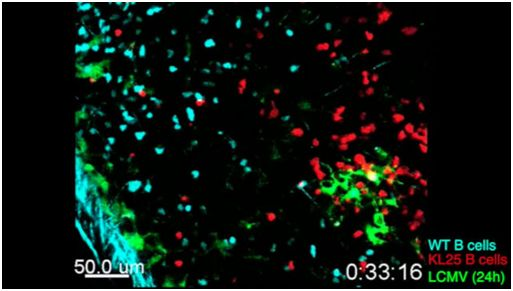Identification of chronic viral infection inhibits B cell response mechanism
October 27, 2016 / Bio Valley BIOON / Based on three independent studies published in the journal Science Immunology, at least for mouse lymphocytic choriomeningitis virus (LCMV), the largest promoter of this inhibition It has been shown to be a group of cytokines called type I interferons (IFN-I). Matteo Iannacone, an immunologist at the San Rafael Academy of Sciences in Italy, said, "All three studies have identified IFN-I as the culprit." For decades, immunologists have used LCMV as a model system to study T cell-dominant immune responses because B cells are unable to produce virus-neutralizing antibodies, or are weakly produced, and are delayed for 7 weeks. produce. But given that some human viruses, such as HIV and HBV, are not able to induce potent antibody responses, Dorian McGavern, a virus immunologist at the National Institute of Neurological Disorders and Stroke, and others decided to use LCMV to discover the mechanisms behind B cell dysfunction. . The McGavern team injected B cells that were engineered to recognize LCMV into untreated mice and then exposed them to the virus. These injected B cells disappeared from the spleens of these mice within one week. However, if the researchers waited until 6 days after infection to inject these B cells, then these cells still exist. In a second independent study, the team of virologist Daniel Pinschewer of the University of Basel in Switzerland similarly noted the three-day "death zone" of LCMV-specific B cells. Both teams knew that this virus induced high levels of IFN-I in vivo during the first few days of infection with LCMV. "IFN-I is the most important alarm initiator," McGavern said. "It is what promotes an immune response to the virus." But in the case of LCMV, this cytokine seems to have a bad side. When the two teams blocked the IFN-I receptor prior to infection, the number of LCMV-specific B cells rose linearly in the spleens of infected mice, allowing them to produce significantly higher levels of virus-neutralizing antibodies. To determine what caused B cells to fail to respond to IFN-I signaling, the Pinschewer team allowed LCMV to infect several knockout mice and found that bone marrow cells, dendritic cells, and T cells were involved. McGavern and his colleagues found that CD8+ T cells respond by killing LCMV-specific B cells within the first few days after infection. Given that CD8+ T cells typically require at least a week to respond to infections, McGavern said it was surprising to observe them so early, but his team recorded B cells and T cells in mouse spleens and lymph nodes. This is confirmed by the interaction between the two. He said, "You have direct visual evidence that cytotoxic T cells can contact and kill B cells." According to the McGavern team, the key to LCMV-specific B cell loss is infection through the B cell receptor, where the B cell receptor binds to the virus and internalizes it. Subsequently, CD8+ T cells kill these infected B cells and clear their chances of making antibodies. Aluminum Alloy Utility Knife,Zinc Alloy Utility Knife,Retractable Aluminium Utility Knife,Aluminium Alloy Artist Knife Shangqiu City Huashang Zhiyuan Tools Co., Ltd. , https://www.hszytools.com